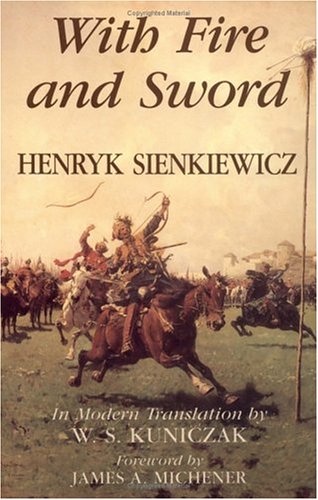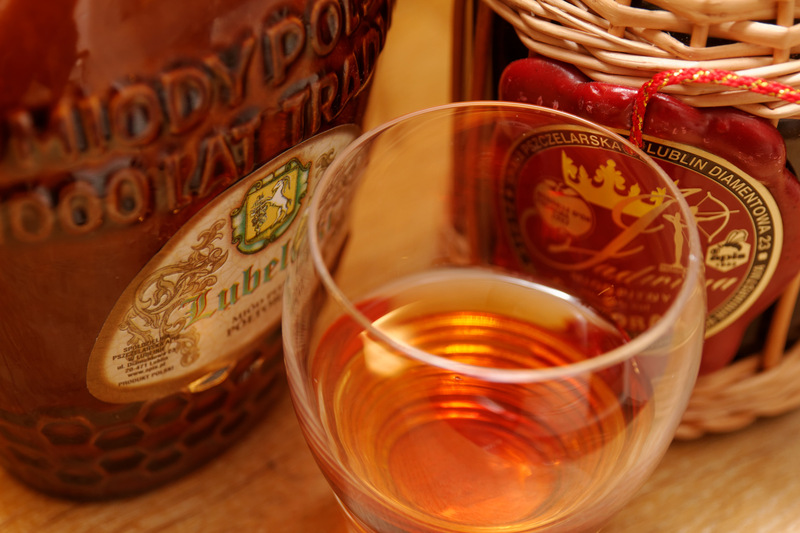Polish mead: nectar of the gods

With Fire and Sword |
Before going to Poland back in 2007 I checked Ratebeer, as one does, to see what the best beers from Poland were. This was before craft brewing hit Poland in a big way, so I assumed I'd see the odd dark lager and perhaps a porter or two, with pretty low ratings. To my surprise I found that most of the highest-regarded "beers" from Poland were meads. Not only that, but the best were considered among the top 1% on Ratebeer, and people were raving about them in the reviews.
Here in Norway people mostly think of mead as "the beer of the vikings", unaware that it's not beer at all, but made from fermented honey. It's an ancient drink that was mainly drunk by the aristocracy, as it was too expensive for commoners. Later, mead dropped out of favour in the west, but remained popular in eastern Europe. Particularly in what was then the largest country in Europe: the Commonwealth of Poland-Lithuania.
To prepare for a trip to Warsaw last month I bought the famous historical novel "With Fire and Sword", written by Henryk Sienkiewicz in 1883. It takes place in the late 1640s, and comes across as a kind of western, with tartar horsemen in the place of indians, and Polish aristocrats as the heroes.
The novel begins with the start of the Khmelnitsky rebellion, a vast rebellion by the cossacks against the Commonwealth, usually seen as the beginning of the end for the Commonwealth. Sienkiewicz paints a vivid picture of lawlessness and warfare in the vast grasslands of Ukraine. At the time Polish aristocrats are settling it from the west, while tartars and cossacks raid from the south. The steppe is a no-man's land between the settled semi-safe southern parts of the Commonwealth and the wild south. It's really no mystery how the cradle of Russian civilization came to be called Ukraine. That is, "borderland".
Sienkiewicz is best known for his novel of historic Rome (Quo Vadis), but in Poland the trilogy of "With Fire and Sword" is the best-loved. And while dated, it's a vivid read. A much-loved figure is Zagłoba, a fast-mouthed, bragging coward with a heart of gold who extricates himself from every tight corner with a mix of cunning and luck.
Another is a Lithuanian: Longinus Podbipienta, a man of slow thoughts and hesitant speech, but super-human strength. He wields in one hand an enormous sword that none of the other characters can swing at all. In battle he leaves an unbelievable trail of destruction that the Poles afterward come to stare at in awe. One senses national stereotypes at play here, and Podbipienta is frequently referred to as "that Lithuanian hop-pole".

Zagłoba |
The founder of Podbipienta's family is famous for having used the great sword to behead three enemies with a single stroke. When we meet him Podbipienta has vowed to remain celibate until he can do the same, but has so far failed, despite now being 45. He's chopped off two heads with one stroke more than once, but so far the magic three eludes him. In the course of the novel he falls in love with a Polish princess, making the issue more urgent still. Faced with the Khmelnitsky rebellion he's delighted, thinking here's his chance, until being told that killing fellow citizens in a civil war doesn't count. Pathetically, he asks if the tartars will join the rebellion. (As moslems, their heads do count, even if they will strengthen the rebellion with hundreds of thousands of warriors.)
Throughout the novel, everyone drinks mead when they can, and frequently praise the quality of it. When there's no mead they drink vodka, but never seem to care much about the quality. And once, when food is running low during a siege, they sink so low as to be forced to drink beer, "thickened with bits of cheese". They don't like it at all. "This horrid beer rattles terribly in the stomach, and the more cheese there is in it, the worse it rattles."
Anyway, for whatever reason, Poland has preserved its mead traditions, and so there are lots and lots of meads produced in Poland, many of them of astonishing quality. Scandinavian mead tends to be thin, overly alcoholic, and generally low on flavour. Polish mead is nothing like that, but a thick viscous golden liquid, with powerful flavours of vanilla, wood, berries, and honey.
The mead that's generally regarded as the best, indeed as the Queen of Meads, is Apis Poltorak Jadwiga. Poltorak means it's produced from two thirds honey and one third water. This particular one has also been flavoured with rose petals and raspberry and aged for many years in wooden casks. The result is an almost indecently opulent orgy of sugar and alcohol.

Apis Lubelski and Apis Jadwiga |
When first you pour it, the immediate sensation is one of lush, dark coppery richness. Then alcoholic vapours rise out of the glass. If you don't like these, go away for a few minutes. When you return, the alcohol has dispersed, and an intense raisiny honey and vanilla aroma remains. That, however, is a mere overture, a hint of what is to follow.
Tipping the contents of the glass into your mouth sets off an explosion of flavours, intense rich vanilla, raisins, honey and spice, with traces of wood, raspberry, apple, and dried fruit. The flavours just go on and on as you swirl the thick, sugary, viscous fluid in your mouth. Wooden syrupy cinnamon and lavender flavours come and go, punctuated by cascades of apple alcohol flavours. Oily leathery vanilla tastes hover above it all. Really, you have to try it to believe it.
If I haven't already made it clear, let me tell you right now that this is one of the best alcoholic drinks ever made. Very little can compete with something so sumptuously rich as this mead. The intense alcohol does nothing to detract from its advantages, since it balances the other flavours. It must be said that these meads are seriously sweet, but that works very well for me.
In a way, I suppose, this is a fitting tribute to the involuntary founder of that same Polish-Lithuanian Commonwealth. Jadwiga was a Hungarian princess of French ancestry, sent to Poland at the age of ten to be king of Poland. No, that's not a typo. The constitution had no provision for a reigning queen, but failed to specify that the king must be male, so Jadwiga was made King of Poland. As such, she was a supremely eligible candidate for wife and was courted by many.
As fate would have it, Jogaila, warrior prince of Lithuania, was chosen as her mate. This created the alliance between Poland and Lithuania, caused Lithuania to Christianize, and created a country that was to endure for four centuries. Jadwiga never accepted her pagan, warlike husband, nearly three times her own age, with whom she shared no common language, and they had no immediate offspring. Except the Commonwealth.
The Commonwealth expired in the partitions of Poland, but somehow the Polish mead tradition and the Lithuanian farmhouse ale traditions lived on. There is Lithuanian mead, too, but there's just one producer, and it's not nearly as good. As far as I'm aware, there is no corresponding Polish farmhouse ale tradition.
Unfortunately, getting hold of these meads is not so easy. Jadwiga is imported to the US, I know, and has also been observed in Japan and Sweden. That's about it. It's well worth a trip to Poland, though.

Apis Lubelski and Apis Jadwiga |
Similar posts
A short history of the Baltic countries
We don't know much about the history before the advent of writing in the Baltics in the 12th century
Read | 2013-09-15 16:39
Mead: a Norwegian tradition?
Most people think of the vikings as big drinkers of mead, and believe that Norway has a long and strong tradition for mead-making
Read | 2018-04-15 12:16
The beer bars of Vilnius
Lithuania may be a small country today, but once the joint Polish-Lithuanian Commonwealth included much of present-day Poland, Lithuania, Latvia, Estonia, Belorussia, and Ukraine
Read | 2011-05-14 10:40
Comments
Paul S Slusarczyk - 2017-10-02 02:36:28
Got to try it and check out another aspect of my Polish heritage!
Bartosz Guzik - 2020-05-06 21:29:32
Hello, just find it in your archives :) Great blog ! : )
"Apis" mead is ok (usually their most expensive bottles, as they also sell a lot poor quality bottles)
Next time, while in Poland, you should really try "Jaros"mead. It is a family producer about 100 km west of Warsaw. He is really a king of mead in the country.
https://www.pasiekajaros.com/ (in English)
interesting article (in Polish) https://winicjatywa.pl/jaros-miodowy-krol/ -the author writes also about Polish spirits.
Closer to border with Lithuania, up north, there is also another good producer of quality mead http://mazurskiemiody.pl/en/home-en/
! Have a great day